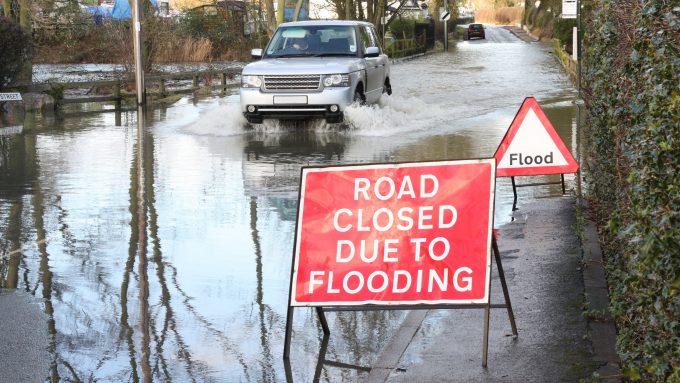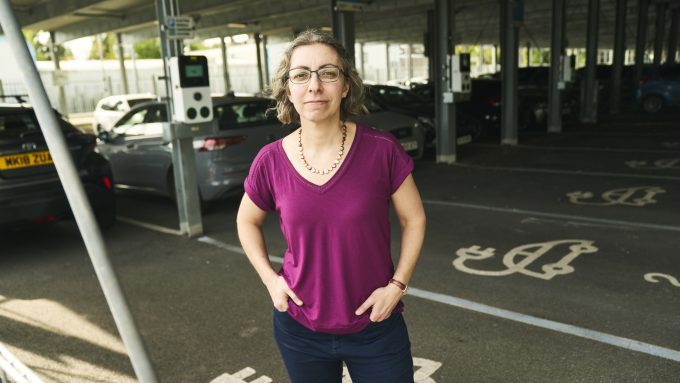
Disruptive tech in focus at Connected Places Summit

“We are seeing a rapid adoption of innovative technology, which is really exciting, but it comes with all sorts of questions and challenges,” says Kate Jennings, chief executive of the Association for Consultancy and Engineering.
She said that exploring these issues is an important part of an ongoing report being developed by the Association, and that the rollout of innovative technology is needed fast to achieve zero carbon. Kate called on greater partnership working between Government and the private sector.
So what does that mean for AI, for example? “We know it will be useful and we know it will unlock opportunities, but there are still real concerns about client adoption and the costs involved," she said.
“Our initial research is highlighting a real mix in adoption of technology such as AI, BIM, Digital Twins and blockchain. Members certainly expect these to grow in importance over the next five years.”

Responsible AI UK’s chief executive and professor of AI, Gopal Ramchurn said AI will play a huge role in making transport systems safer, cleaner, and also more accessible to a wide variety of end users.
He called on the transport sector and technology companies to improve their engagement with end users in building novel technologies and innovating their products and services, such as the deployment of AI, to ensure issues around safety and fairness can be addressed.
“It is an amazing time to be working in AI, but we need to make sure that whenever we are making these big innovations, we ensure that the data is collected in the right way at the right time from the right people and share the benefits equally across society.u0022Responsible AI UK’s chief executive and professor of AI, Gopal Ramchurn
“Investment has to go towards making sure that the benefits are shared fairly across society when we are building new sorts of technology including AI,” he adds, “so we are not just building it for the most well off, and we're not building for only those parts of the country that are already well served”.
CC Informatics director Mark Cramman spoke about the benefits of using new technology such as drones and AI in the field of asset inspections. “The opportunities are huge,” he said. The sector continues to “send people down ropes to survey viaducts, and putting them at risk to take photographs” whereas new systems such as his company’s AssetScan product allow many photographs taken by a drone and be assessed by technology designed to spot signs of deterioration early.

King’s College London’s professor of practice in AI, Sana Khareghani agreed that technology such as AI has a great role to play in preventative maintenance, “allowing us to address problems where they exist – and at the time they exist – rather than on a pre-determined schedule, which is what we used to do.” But one of the biggest challenges is gaining access to the right data, she adds.
“I’m incredibly excited about the Department for Transport’s AI strategy coming up. They have done an incredible job, talking to industry, academia, as well as Government partners to find out what the different policies are, and where funding is required,” Sana added.
“The key thing is understanding that the people who are ultimately going to be using these technologies need to be part of the conversation from the outset. Rather than technologists sitting in a room and figuring out how to solve problems, we need to involve the people who end up being the users of such systems.”King’s College London’s professor of practice in AI, Sana Khareghani
Atlas Ventures’ founding partner Duran Cesur says that AI is here to stay, but recognised that “as with all new technologies, there will be a level of discomfort in society when it first gets widely adopted”.
He added that people tend to underestimate the impact of AI, but explained that the technology can lead to significant efficiency gains from a climate and decarbonisation perspective, which may not immediately be obvious.
Duran cites the example of a company using AI to optimise how much heating is required to roll steel in a factory. “It's much easier to roll steel when it's hot, but they spend too much on energy. So if you're able to improve that whole process, even by two or three percentage points, that ends up leading to a significant decarbonisation effect.”

Another example of disruptive technology being used to great effect in the transport and city arenas is digital twins. During a session at the Summit hosted by the Digital Twin Hub, the director of infrastructure advisory at KPMG, Janet Greenwood noted that "digital twins are essential, but not sufficient. We need digital twin behaviours, digital twin decision making, digital twin governance. We all need to behave and act differently to have impact."
Technology company Business Modelling Applications’ senior vice president for decarbonisation and growth strategy Michael Avant-Smith added: “We have got to find a way to use digital twins, through different lenses of the investor, regulator and customer. Digital twins themselves won’t fix policy; it facilitates collaboration that we so desperately need.”
One example of how the Digital Twin Hub is helping to develop senior leaders involved in emerging technology is through a new course with Cranfield University.
Read more from the Connected Places Summit, with a piece focusing on finance.





